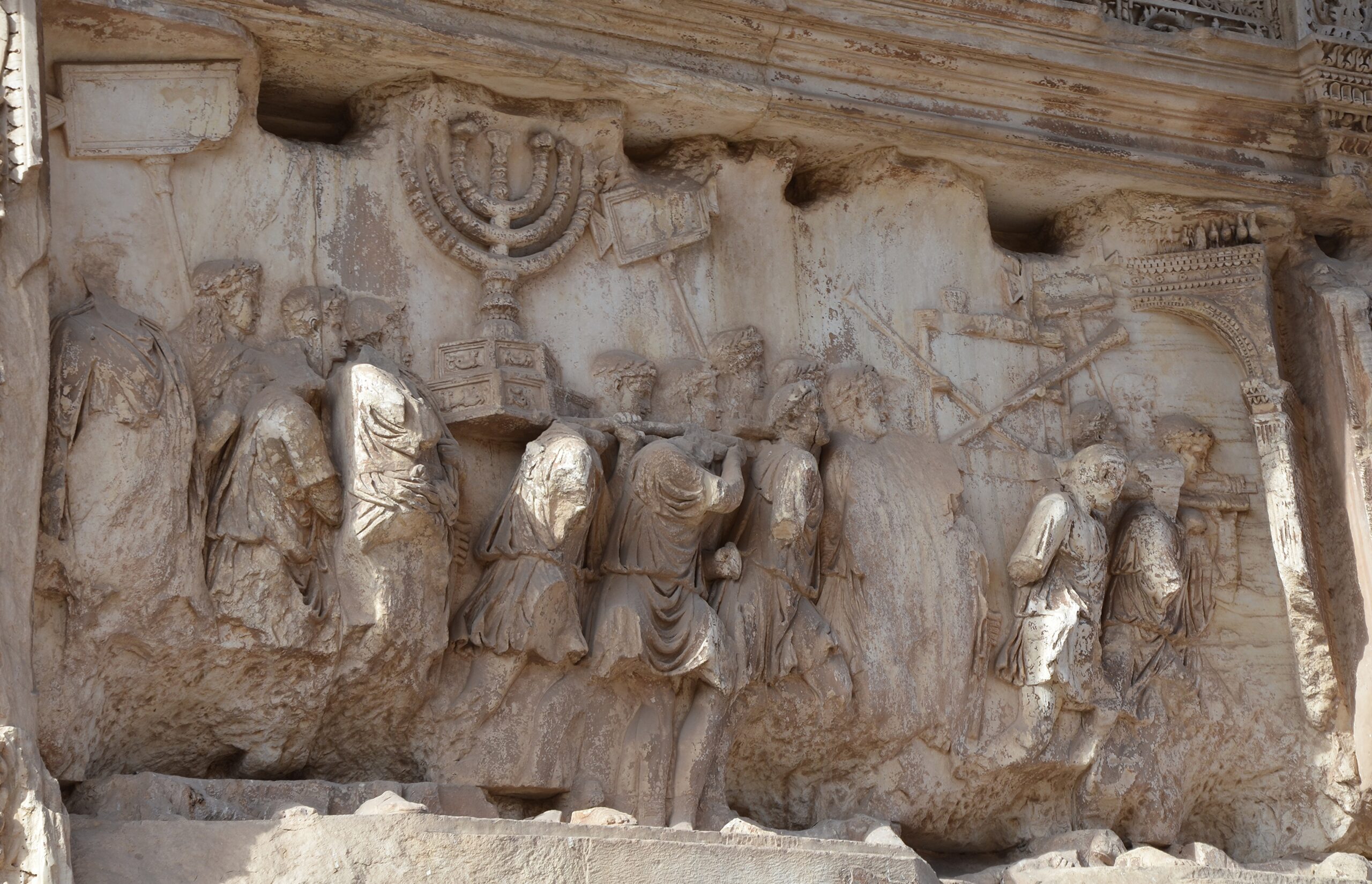Mourning holiday
The 17th of the Hebrew month, Tammuz, this year, July 6, is a Jewish day of fasting when a series of tragedies in Jewish history linked to the Torah and the Temple are remembered.

The interior of the Arch of Titus in Rome shows the triumphal procession of Titus after the fall of Jerusalem. The menorah depicted on the arch served as the model for the menorah used as the emblem of the State of Israel. Photo: Carole Raddato
Shiva Asar b’Tammuz is a fast observed on the 17th (Shiva Asar) of the Hebrew month of Tammuz which this year falls on July 6.
The 17th of Tammuz, is a day of mourning on which several Jewish tragedies are in held in focus – Moses broke the stone tablets with the Ten Commandments when he saw the golden calf; the sacrifices were stopped in Jerusalem during the Babylonian siege; an idol was erected in the temple (during the First Temple period); the Roman leader Apostomos burned a scroll containing the Torah in AD 50 AD and the Romans managed to break through the walls of Jerusalem in AD 69 to later destroy the temple.
The Temple burned
Shiva Asar b’Tammuz is a minor fast and not a public holiday; fasting begins at sunrise and ends at sunset.
The 17th of Tammuz ushers in a period of mourning that culminates three weeks later on the ninth of the month of Av. This period is often called the three (fasting) weeks and is seen as a time when mourn together. Joyous parties and weddings are not scheduled during this period.
The end of the three weeks, Tisha B’Av – the ninth of Av, is the day that remembers the destruction of Jerusalem’s two temples, the first in 586 BC when the Babylonian king burned down the temple and then in AD 70 when Jerusalem was destroyed, and the temple burned down.
Some interpretations claim that the fast of Tammuz is one of the fasts mentioned in Zechariah 8:19 as the fast day of “the fourth month” because Tammuz is the fourth month of the Hebrew calendar.
Smashed the stone tablets
The 17th of Tammuz occurs forty days after the Jewish holiday of Shavuot. It was then that Moses ascended Mount Sinai and stayed there for forty days. When Moses came down again and saw the Israelites dancing around the golden calf, he broke the stone tablets with God’s ten commandments.
The 17th of Tammuz is also the second of the four fasts mourning the destruction of the Temple and the Jewish exile in Babylon. It is preceded by the fast on the 10th of Tevet, which this year fell on the third of January. This fast mourns Nebuchadnezzar’s siege of Jerusalem, which led to the destruction of Solomon’s Temple, the downfall of the Kingdom of Judah and the Babylonian exile of the Jewish people.


